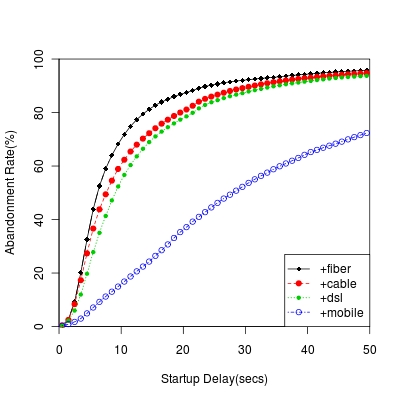|
Airtel Zero
Airtel Zero was a platform launched on 6 April 2015 in India by Bharti Airtel, a multinational telecommunications service company across South Asia and, at the time, the largest cellular service provider in India, with 192.22 million subscribers. As per reports, Airtel Zero was a platform through which Airtel would have offered users free access to certain mobile applications and services from companies who had signed up with Airtel. History The announcement to launch Airtel Zero came soon after the Telecom Regulatory Authority of India (TRAI) released its consultation paper on OTT (Over-the-top) services and invited submissions on introducing OTT charges. Through the Zero platform, app developers and internet service providers (ISPs) would be able to make a part of their entire mobile app free for customers if they pay Airtel a fixed fee for the cost of data transfer incurred while using their services. After the launch, Airtel faced the lot of criticism on social media with users ... [...More Info...] [...Related Items...] OR: [Wikipedia] [Google] [Baidu] |
Bharti Airtel
Bharti Airtel Limited is an Indian Multinational corporation, multinational Telecommunications in India, telecommunications company based in New Delhi. It operates in 18 countries across South Asia and Africa, as well as the Channel Islands. Currently, Airtel provides 5G, 4G and LTE Advanced services throughout India. Currently offered services include fixed-line broadband, and voice services depending upon the country of operation. Airtel had also rolled out its Voice over LTE (VoLTE) technology across all Indian telecom circles. It is the List of telecom companies in India#Wireless operators, second largest mobile network operator in India and the List of mobile network operators#Terrestrial, second largest mobile network operator in the world. Airtel was named India's 2nd most valuable brand in the first ever Brandz ranking by Millward Brown and WPP plc. Airtel is credited with pioneering the strategic management of outsourcing all of its business operations except marketi ... [...More Info...] [...Related Items...] OR: [Wikipedia] [Google] [Baidu] |
South Asia
South Asia is the southern Subregion#Asia, subregion of Asia that is defined in both geographical and Ethnicity, ethnic-Culture, cultural terms. South Asia, with a population of 2.04 billion, contains a quarter (25%) of the world's population. As commonly conceptualised, the modern State (polity), states of South Asia include Bangladesh, Bhutan, India, the Maldives, Nepal, Pakistan, and Sri Lanka, with Afghanistan also often included, which may otherwise be classified as part of Central Asia. South Asia borders East Asia to the northeast, Central Asia to the northwest, West Asia to the west and Southeast Asia to the east. Apart from Southeast Asia, Littoral South Asia, Maritime South Asia is the only subregion of Asia that lies partly within the Southern Hemisphere. The British Indian Ocean Territory and two out of Atolls of Maldives, 26 atolls of the Maldives in South Asia lie entirely within the Southern Hemisphere. Topographically, it is dominated by the Indian subcontinent ... [...More Info...] [...Related Items...] OR: [Wikipedia] [Google] [Baidu] |
India
India, officially the Republic of India, is a country in South Asia. It is the List of countries and dependencies by area, seventh-largest country by area; the List of countries by population (United Nations), most populous country since 2023; and, since its independence in 1947, the world's most populous democracy. Bounded by the Indian Ocean on the south, the Arabian Sea on the southwest, and the Bay of Bengal on the southeast, it shares land borders with Pakistan to the west; China, Nepal, and Bhutan to the north; and Bangladesh and Myanmar to the east. In the Indian Ocean, India is near Sri Lanka and the Maldives; its Andaman and Nicobar Islands share a maritime border with Thailand, Myanmar, and Indonesia. Modern humans arrived on the Indian subcontinent from Africa no later than 55,000 years ago., "Y-Chromosome and Mt-DNA data support the colonization of South Asia by modern humans originating in Africa. ... Coalescence dates for most non-European populations averag ... [...More Info...] [...Related Items...] OR: [Wikipedia] [Google] [Baidu] |
Mobile Applications
A mobile application or app is a computer program or software application designed to run on a mobile device such as a phone, tablet, or watch. Mobile applications often stand in contrast to desktop applications which are designed to run on desktop computers, and web applications which run in mobile web browsers rather than directly on the mobile device. Apps were originally intended for productivity assistance such as email, calendar, and contact databases, but the public demand for apps caused rapid expansion into other areas such as mobile games, factory automation, GPS and location-based services, order-tracking, and ticket purchases, so that there are now millions of apps available. Many apps require Internet access. Apps are generally downloaded from app stores, which are a type of digital distribution platforms. The term "app", short for " application", has since become very popular; in 2010, it was listed as " Word of the Year" by the American Dialect Society. Ap ... [...More Info...] [...Related Items...] OR: [Wikipedia] [Google] [Baidu] |
Telecom Regulatory Authority Of India
The Telecom Regulatory Authority of India (TRAI) is a regulatory body set up by the Government of India under section 3 of the Telecom Regulatory Authority of India Act, 1997. It is the regulator of the telecommunications sector in India. It consists of a chairperson and not more than two full-time members and not more than two part-time members. The TRAI Act was amended by an ordinance, effective from 24 January 2000, establishing a Telecom Disputes Settlement and Appellate Tribunal to take over the adjudicatory and disputes functions from TRAI. History Telecom Regulatory Authority of India was established on 20 February 1997 by an Act of Parliament to regulate telecom services and tariffs in India. Earlier, regulation of telecom services and tariffs was overseen by the Central Government. TRAI's mission is to create and nurture conditions for the growth of telecommunications in India to enable the country to have a leading role in the emerging global information societ ... [...More Info...] [...Related Items...] OR: [Wikipedia] [Google] [Baidu] |
Over-the-top Content
An over-the-top media service (also known as over-the-top television, or simply OTT) is a digital distribution service of video and audio delivered directly to viewers via the public Internet, rather than through an over-the-air, cable, satellite, or IPTV provider. The term is synonymous with "streaming platform". OTT services may be subscription-based or free, and are typically accessed via television sets with integrated Smart TV platforms, streaming devices such as Amazon Fire TV and Roku, video game consoles, websites on personal computers, and apps on smartphones and tablets. OTT bypasses broadcast, cable, and satellite transmissions—the system through which companies have traditionally acted as controllers or distributors of television content. This content may include shows and movies for which the OTT acquired licensed rights from the content owner. Programming may also include original content produced by the service or specifically for it. OTT services inc ... [...More Info...] [...Related Items...] OR: [Wikipedia] [Google] [Baidu] |
Internet Service Providers
An Internet service provider (ISP) is an organization that provides a myriad of services related to accessing, using, managing, or participating in the Internet. ISPs can be organized in various forms, such as commercial, community-owned, non-profit, or otherwise privately owned. Internet services typically provided by ISPs can include internet access, internet transit, domain name registration, web hosting, and colocation. History The Internet (originally ARPAnet) was developed as a network between government research laboratories and participating departments of universities. Other companies and organizations joined by direct connection to the backbone, or by arrangements through other connected companies, sometimes using dialup tools such as UUCP. By the late 1980s, a process was set in place towards public, commercial use of the Internet. Some restrictions were removed by 1991, shortly after the introduction of the World Wide Web. During the 1980s, online servi ... [...More Info...] [...Related Items...] OR: [Wikipedia] [Google] [Baidu] |
Net Neutrality
Net neutrality, sometimes referred to as network neutrality, is the principle that Internet service providers (ISPs) must treat all Internet communications equally, offering User (computing), users and online content providers consistent transfer rates regardless of content, website, computing platform, platform, application software, application, type of equipment, source address, destination address, or method of communication (i.e., without price discrimination). Net neutrality was advocated for in the 1990s by the presidential administration of Presidency of Bill Clinton, Bill Clinton in the United States. Clinton signed of the Telecommunications Act of 1996, an amendment to the Communications Act of 1934. In 2025, an American court ruled that Internet companies should not be regulated like utilities, which weakened net neutrality regulation and put the decision in the hands of the United States Congress and state legislatures. Supporters of net neutrality argue that it p ... [...More Info...] [...Related Items...] OR: [Wikipedia] [Google] [Baidu] |
Zero-rating
Zero-rating is the practice of providing Internet access without financial cost under certain conditions, such as by permitting access to only certain websites or by subsidizing the service with advertising or by exempting certain websites from the data allowance. Commentators discussing zero-rating present it often in the context of net neutrality. While most sources report that use of zero-rating is contrary to the principle of net neutrality, there are mixed opinions among advocates of net neutrality about the extent to which people can benefit from zero-rating programs while retaining net neutrality protections. Supporters of zero-rating argue that it enables consumers to make choices to access more data and leads to more people using online services, but critics believe zero-rating exploits the poor, creates opportunities for censorship, and disrupts the free market. Existing programs Internet services like Facebook, Wikipedia and Google have built special programs to use ... [...More Info...] [...Related Items...] OR: [Wikipedia] [Google] [Baidu] |
Facebook Zero
Facebook Zero is an initiative undertaken by social networking service company Facebook in collaboration with mobile phone-based Internet providers, whereby the providers waive data (bandwidth) charges (also known as '' zero-rate'') for accessing Facebook on phones via a stripped-down text-only version of its mobile website (as opposed to the ordinary mobile website m.facebook.com that also loads pictures). The stripped-down version is available online only through providers who have entered the agreement with Facebook. Photos are not loaded by default. Users may still choose to view them by clicking through but regular data charges apply to photo use. History Plans for Facebook Zero were first announced at the Mobile World Congress in February 2010 by Chamath Palihapitiya. In collaboration with 50 mobile operators around the world, it was officially of launched on May 18, 2010. The scheme is considered zero-rated or the practice of offering free data for some services, filter ... [...More Info...] [...Related Items...] OR: [Wikipedia] [Google] [Baidu] |


